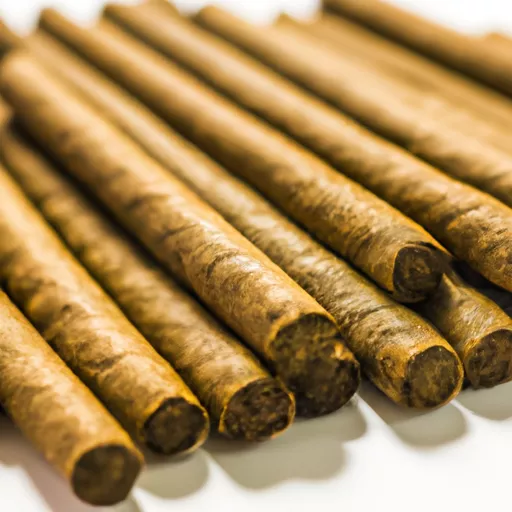
As a fan of tobacco products, I have always been fascinated by the different varieties and styles available in the market. Whenever I visit a tobacco shop, I can’t help but be drawn to the display of little cigars. These small and compact versions of traditional cigars have always caught my attention, and I have grown to love them over the years. In this article, I will be sharing my insights on little cigars, their history, and the reasons why they are becoming increasingly popular among tobacco enthusiasts.
To begin with, little cigars are essentially cigars that are smaller in size and thinner than traditional cigars. They are usually around the same size as a regular cigarette but have a cigar-like appearance and are made using the same wrapper, binder, and filler as traditional cigars. The only real difference between little cigars and cigarettes is the wrapper material and the fact that little cigars are made by hand-rolling and not by using a machine.
But where did little cigars originate from? The history of little cigars can be traced back to Europe in the 19th century. Smokers who couldn’t afford the expensive and elaborate cigars turned to these smaller and cheaper alternatives instead. These cigars were initially known as “cigarrellas” in Spain and “cheroots” in France. It wasn’t until the 1860s that they became popular in the United States, thanks to the American Civil War when soldiers brought them back from Cuba. These little cigars were cheaper and more accessible than traditional cigars, making them an instant hit among the general public.
Over the years, little cigars have evolved and are now produced in a variety of flavors such as vanilla, chocolate, and even fruit flavors like cherry and strawberry. These flavors have made them more appealing to a wider audience, including those who may not be regular cigar smokers. The addition of flavors has also made these little cigars a popular choice for those who prefer a milder and sweeter smoking experience.
One of the main reasons behind the growing popularity of little cigars is their affordability. Traditional cigars can be expensive, with some premium brands costing hundreds of dollars for just one cigar. On the other hand, little cigars are not only cheaper but also come in packs of 20, making them a more economical choice for regular smokers. This affordability factor has made little cigars a go-to option for those who want to enjoy the taste of a cigar without breaking the bank.
Another reason for the increasing popularity of little cigars is their convenience. As they are smaller in size, they are easier to carry around and can be smoked quickly. Traditional cigars can take up to an hour to smoke, making them a more time-consuming option. However, little cigars can be smoked in as little as 10-15 minutes, making them a great choice for a quick smoke break during a busy day.
One thing to note is that despite their smaller size, little cigars still provide the same rich and complex flavors that traditional cigars are known for. This is because they are made using the same high-quality tobacco as traditional cigars, ensuring that the taste is not compromised. In fact, many cigar aficionados enjoy the variety that little cigars offer, with the option of trying different flavors and blends without committing to a whole box of traditional cigars.
It is also worth mentioning that little cigars are enjoyed by a diverse group of people, not just cigar smokers. As they are smaller and milder in flavor, they are often the preferred choice of those who are just starting to smoke cigars. It is a great way for people to experience the taste of a cigar without being overwhelmed by the strength and intensity of a traditional cigar.
However, it is important to note that despite their smaller size, little cigars are not any less harmful than traditional cigars. They still contain tobacco and should be enjoyed responsibly, just like any other tobacco product. It is always advisable to adhere to the recommended daily intake and to avoid smoking little cigars in enclosed spaces or around non-smokers to prevent second-hand smoke exposure.
In conclusion, little cigars have come a long way since their humble beginnings in the 19th century. They provide a great alternative for those who enjoy the taste of cigars but find traditional cigars too expensive or time-consuming. Their popularity is on the rise, and with the addition of new flavors and blends, they are bound to become an even more popular choice among tobacco enthusiasts in the future. So the next time you visit a tobacco shop, don’t forget to try out a pack of little cigars for a new and unique smoking experience.